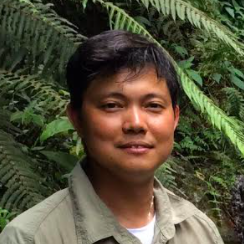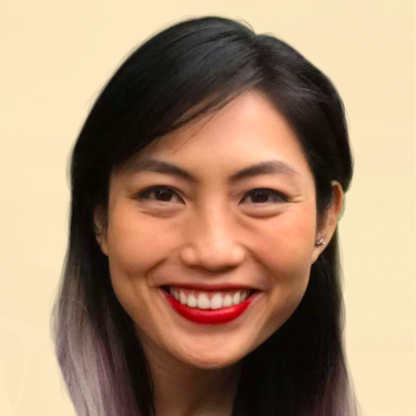
MANILA, Philippines – If there's anything the outpouring of support for Rappler CEO Maria Ressa and former Rappler researcher-writer Reynaldo Santos Jr. proves, it's that the world won’t stand idly by as the cybercrime law is put to the test in the Philippines.
Outraged by what many call a “tragedy for Philippine democracy,” groups all over the world slammed the guilty verdict against Ressa and Santos and decried its implications on press freedom for years to come. (READ: Why democracies should push back vs Maria Ressa verdict)
The cyber libel case stemmed from Santos’ May 2012 article on the late former chief justice Renato Corona’s links to businessmen, notably Wilfredo Keng. Keng disputed parts of the article that quoted an intelligence report linking him to drugs and human trafficking.
While the article was published in May 2012, it was only 5 years later, in October 2017, that Keng filed a complaint. It was already beyond the one-year prescription period for libel under the Revised Penal Code. It was also published 4 months before the cybercrime law was enacted.
However, the court justified that Rappler’s correction of a typographical error in February 2014 was a “republication of the article” and was thus included in the coverage of the cybercrime law. (READ: Judge Montesa 'failed to understand how journalism works)
Denouncements of the verdict quickly poured in from human rights groups, progressive groups, youth groups, campus publications, media groups, and personalities all over the world.
Human rights groups pointed out how the guilty verdict was yet another example of the weaponization of the law, and carried a dangerous message to the public that “anyone and everyone can be criminalized for their views and opinions.”
Journalists and media groups backed Ressa and Santos, and likewise reiterated the implications of the verdict. The Foreign Correspondents Association of the Philippines pointed out how cyber libel can now be a “new weapon in the growing legal arsenal against constitutionally guaranteed civil liberties in the Asian outpost of democracy.”
International personalities including former US secretaries of state Hillary Clinton and Madeleine Albright also expressed their solidarity.
Even Twitter itself has made a stand for Ressa.
From business groups, lawmakers, international groups and unions to progressive groups, campus publications, and schools, here are some of the over 100 statements that poured in to call for press freedom and decry the guilty verdict:
International media, press freedom groups
- AAJA
- AAJA-Asia
- Centre For Independent Journalism in Malaysia
- Coalition for Women in Journalism
- Committee to Protect Journalists
- Daily Princetonian
- Foreign Correspondents’ Club Hong Kong
- ICFJ
- International Federation of Journalists
- International Press Institute
- Media, Entertainment & Arts Alliance from Australia
- Reporters without Borders
- South Asia Media Defenders Network
- WAN-IFRA
International communities, groups
- ARTICLE 19
- Design 4 Democracy Coalition
- International Grand Committee - Members of Parliaments from 14 nations
- Meedan
International personalities
- Amal Clooney
- Caoilfhionn Gallagher QC
- Hillary Clinton
- Madeleine Albright
- US Ambassador to the Philippines Sung Kim
Local media groups
- ABS-CBN News
- Altermidya
- Cebu Citizens Press Council
- CMFR
- Concerned Artists of the Philippines
- Consortium on Democracy and Disinformation
- LODI Arts and Media Alliance
- NUJP
- Photojournalists Center of the Philippines
- Probe Production
- Ateneo de Manila University Departments of Communication and Political Science
- University of the Philippines College of Mass Communication
Campus publications
- Atenews
- Catalyst
- CLSU Collegian
- College Editors Guild of the Philippines
- College Editors Guild of the Philippines - Cordillera
- College Editors Guild of the Philippines - Davao
- College Editors Guild of the Philippines - Metro Manila
- College Editors Guild of the Philippines - Southern Tagalog
- Daily Guardian
- Fiat Lux
- Hi-Lites
- Holy Family Academy Cor-Unum
- Kalasag
- Kurit Bulawan
- La Estrelle Verde
- Lycean Pioneer
- Pagbutlak
- Pahayagang Plaridel
- Philippine Artisan
- Pillars Publication
- Pioneer Publication
- PUP Campus Journalists
- SINAG
- Tarlac State University - The Work
- The Angelite
- The Communicator
- The GUIDON
- The Manila Collegian
- The Reflection
- The Spectrum USLS
- The Technopacer-Talisay Campus
- The Torch Publication
- Tinig ng Plaridel
- Today's Carolinian
- Tug-Ani
- UPLB Perspective
- Union of Journalists of the Philippines-University of the Philippines
- UP Solidaridad
- UP Vista
- UST College of Science Journal
- Westernian Advocate
- White & Blue
Business community
- Makati Business Club
- Bishops-Businessmen's Conference for Human Development
- Filipina CEO Circle
- Judicial Reform Initiative
- Institute of Corporate Directors
- Institute for Solidarity in Asia
- Philippine Business for Education
Human rights groups
Youth groups
- ADMU Sanggunian
- Akbayan Youth
- Akbayan Youth Cebu
- Alyansa ng Kabataang Mamamahayag ng PUP
- Amarela PH
- De La Salle University Student Media Council
- Kalikha UPD
- Liberal PH Youth
- Student Christian Movement of the Philippines
- Student Council Alliance of the Philippines
- Trinity University of Asia - Media and Communication Society
- UP Aguman
- UP Alyansa
- UP Broadcasting Association
- UP Broadcasters Guild
- UP Community Broadcasters Society
- UP Diliman USC
- UPLB Unbound
- UPM Political Science Class 2022
- UPM Pre-Law Society
- UP Politikons
- UP Tacloban Debate Society
- Voice of the Freshies - UPM
- YFACT
- Youth Reform Movement PH
- Youth Resist
Human rights groups
Communities
Personalities
- Antonio Trillanes
- Arlene "Kaka" Bag-ao
- Bishop Broderick Pabillo
- Family of Jose W. Diokno
- Francis "Kiko" Pangilinan
- Leni Robredo
- Risa Hontiveros
– Rappler.com










































